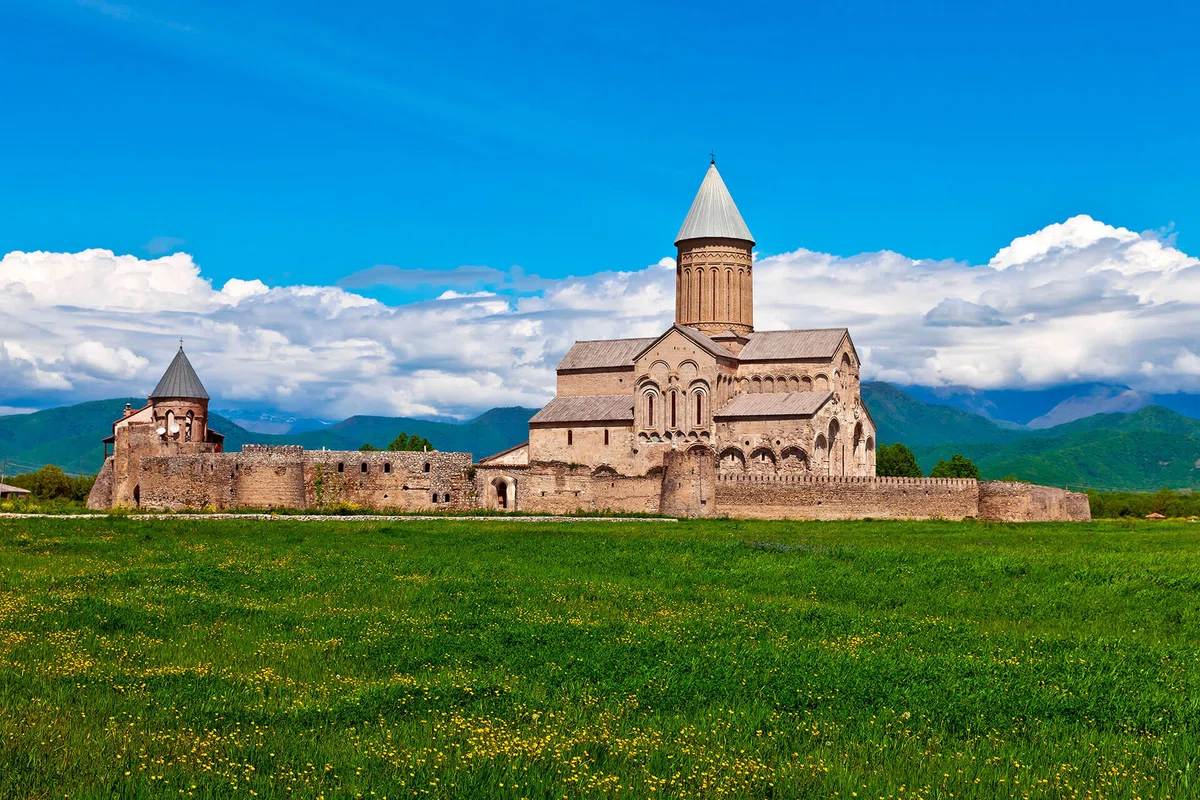
What temples are worth visiting in Georgia. The best Christian churches and Kakheti.
There are many Christian churches in Georgia, but special attention should be paid to some of them. David Gareja is a cave monastery with an area of tens of square kilometers. Gurjaan Monastery is the only temple crowned with two octagonal domes. The Nekresi complex, the minor basilica of which is one of the first Christian buildings in Georgia. Dzveli Shuamta, located in a quiet secluded place, and the newer Ahali Shuamta. An unusual cathedral of Alaverdi, located against the backdrop of massive snowy mountains.
Guide to the shrines of Kakheti⬇️
David-Gareja
Monastery David-Gareja For centuries, it was the most important spiritual, political and economic center of the country, in which monastic life proceeded according to its own, specific way of life. Handwritten collections were created here, famous spiritual fathers conducted their activities.
David-Gareja Cave Monastery Complex located in Kakheti, in Sagarejo Municipality (part of the complex is located on the territory of today's Azerbaijan). The area of the complex occupies several tens of square kilometers and unites several monastic ensembles created at different times: Lavra of David, Dodosrka, Church of Natlismtsemeli (John the Baptist), Bertubani, Udabno, Veran-Gareja, Tsamebuli, Chichhituri, Tetri Senakebi, Mravaltskaro, Sabereebi, Pirukugmari, Kolagiri, Didi Kvabebi and
Patara Kvabebi, Satorge, Berebis Seri, Shavi Senakebi, Berebis Mta, Kotsakhura, Tsintskaro, Gansashori, Mgvime, Shavi Mindori.
The history of David Gareja begins with the first half of the VI century, when the Holy Father David Gareja - one of the Syrian monks — together with his disciple Lucian settled in a deserted place in a natural cave. This cave later became a monastery and is called the "Lavra of David". Even during the life of the holy father, according to the location of the local ruler, whom David converted to Christianity, a small church of the Transfiguration of the Lord was carved into the rock below the cave, in which the Holy Fathers are buried.
The center of the complex - the architectural ensemble "Lavra of David" - unites the buildings of the VI-XVIII centuries. Most of the churches, residential and utility rooms are located in caves at different levels of multi-tiered relief and are interconnected by a complex system of stairs and passages. The lavra is completely surrounded by a fence, in which there are watchtowers. Over time, due to the increased number of members of the monastic brotherhood grouped around St. David and St. Lucian, the monastery complex "Lavra of David" expanded in the form of separate cave ramps.
In 2007, David-Gareja was included in the preliminary list of UNESCO World Cultural Heritage Monuments.
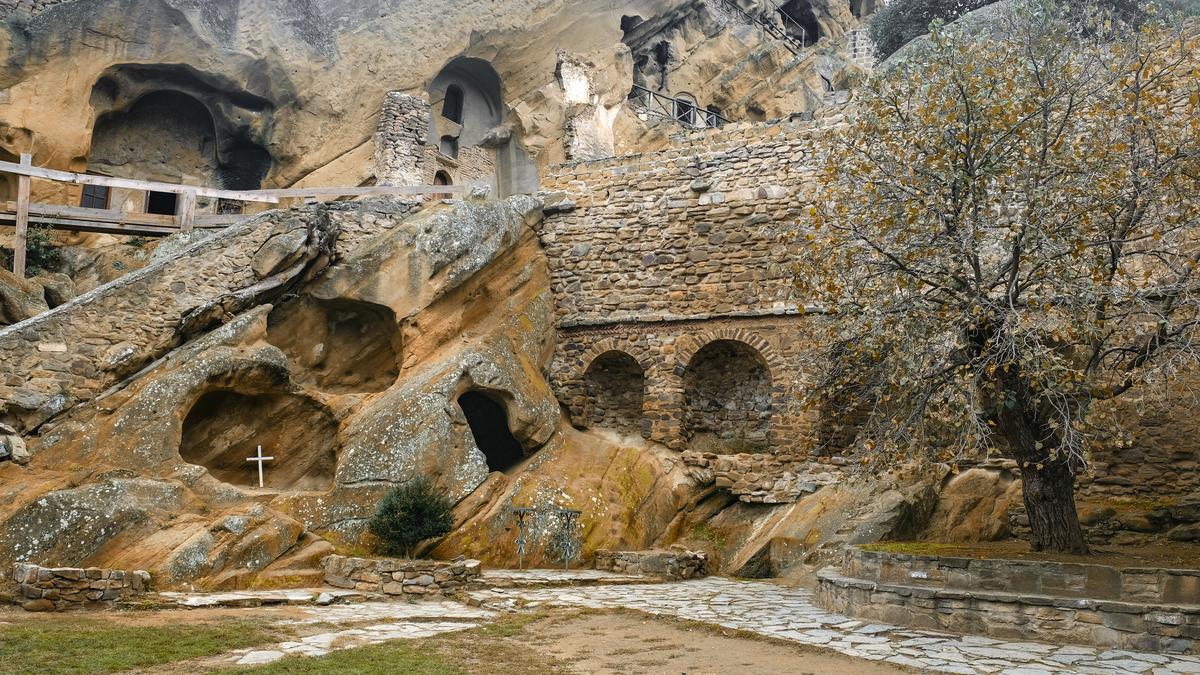
Gurjaan Monastery of All Saints
For Christian (especially Byzantine and Russian) architects, the presence of several domes is not uncommon. However, the two-domed Gurjaan monastery carries a different meaning: the two domes symbolize the heavenly and earthly essence of Christ.
Gurjaan Monastery – The three-nave baselika named after the Usypenius of the Most Holy Theotokos is located in the Gurjaania district. According to scientists, the temple was built in the VIII-IX centuries.
The monastery is a unique phenomenon in Georgian architecture: this is the only temple crowned with two equivalent octagonal domes. It is noteworthy that the temple was built in this form, and the domes were not added at a later time. The dimensions of the basilica are 24.5 x 10 meters, the height to the top of the dome is 13.5 meters. It should be noted that the western dome is slightly higher and wider than the eastern one. For the construction of the basilica, the builders used various materials, mainly cobblestones. The walls of the middle nave, domes and vaults were built with square bricks. The capitals on the columns of the middle nave are highlighted with bricks of special shapes.
There are few decorative elements in the temple - only on the eastern facade there are openings pushed to one level with semicircular arches, in which windows with crosses are inserted. Despite the modesty of decorative elements, in comparison with the monuments of an earlier period, there is already a tendency to use decorative elements. The proportions of the structure are also distinguished by their upward elongation.
In the XVII century, a thorough reconstruction of the temple was carried out. The central decorative arch of the eastern facade was changed, the drum of the western dome, the cornice and the ceiling were strengthened. Presumably, at the same time, the walls of the basilica were covered with paintings that have not survived to our time.
Queen Ketevan made a great contribution to the reconstruction of the temple. It is interesting that before her martyrdom on the way to Iran, it was in this temple that she offered a prayer.
Kveltsminda in Gurjaani it is an active monastery.
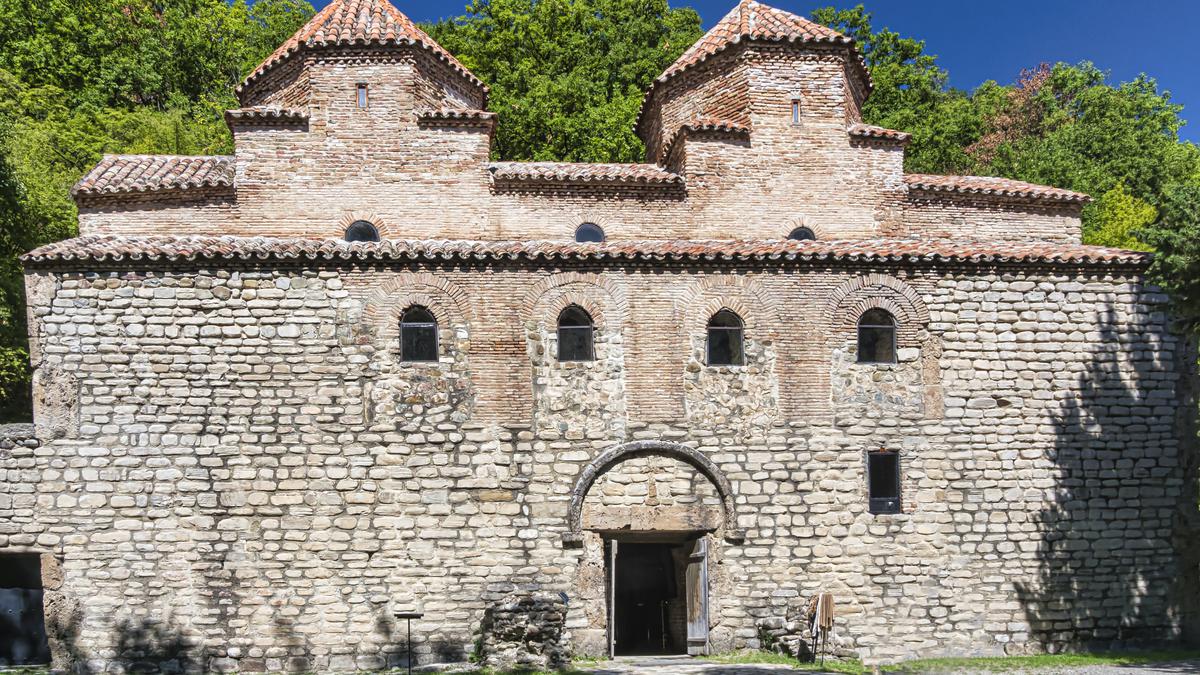
The fortress city of Gremi
In 1565, by decree of Tsar Levan, the Arkhangelsk monastery complex was erected. The frescoes of the western wall of the southern arm of the cathedral depict his portrait with a model of the temple in his hands. In 2007, the monastery complex of Gremi was included in the preliminary list of UNESCO World Cultural Heritage monuments.
The fortress city of Gremi is located in the vicinity of Kvareli, south of the village of Gremi, at the mouth of the Intsoba and Cheleti rivers (left tributary of the Alazani), on a high hill (Kvareli municipality).
The first settlements on the territory of Gremi appeared in the Late Bronze Age. The city acquired strategic and political significance in the XV century, when the first king of the Kakheti Kingdom, George (1466-1476), declared Gremi the capital. Two centuries Gremi It remained the capital of the Kakheti Kingdom and the cultural and educational center of the region, where there was an educational institution - the Academy. The city, located on an area of 50 hectares, was surrounded by a fence and consisted of three main parts. On the territory of the citadel there were the Arkhangelsk monastery complex, a palace, a bell tower, buildings for household purposes and a secret underground cave that led to the river. The urban-type settlement, which was located along the Intsoba River, on the east and west sides of the citadel, included a residence, fountains, an octagonal tower, a bathhouse, city blocks, etc. An indoor bazaar and workshops were located in the center of the shopping district.
The powerful and prosperous city of Gremi was destroyed in 1614-1616, after the military campaigns of the ruler of Iran – Shah Abbas. A few decades later , the chronicler of Tsar Rostom wrote: "Once beautiful and strong structures stood destroyed and looted. Without windows and doors, they turned into a stall for animals."
Currently, a museum-reserve has been created on the territory of the former city of Gremi, which is located in the royal chambers of the XV century. The museum exhibits exhibits discovered during archaeological excavations.
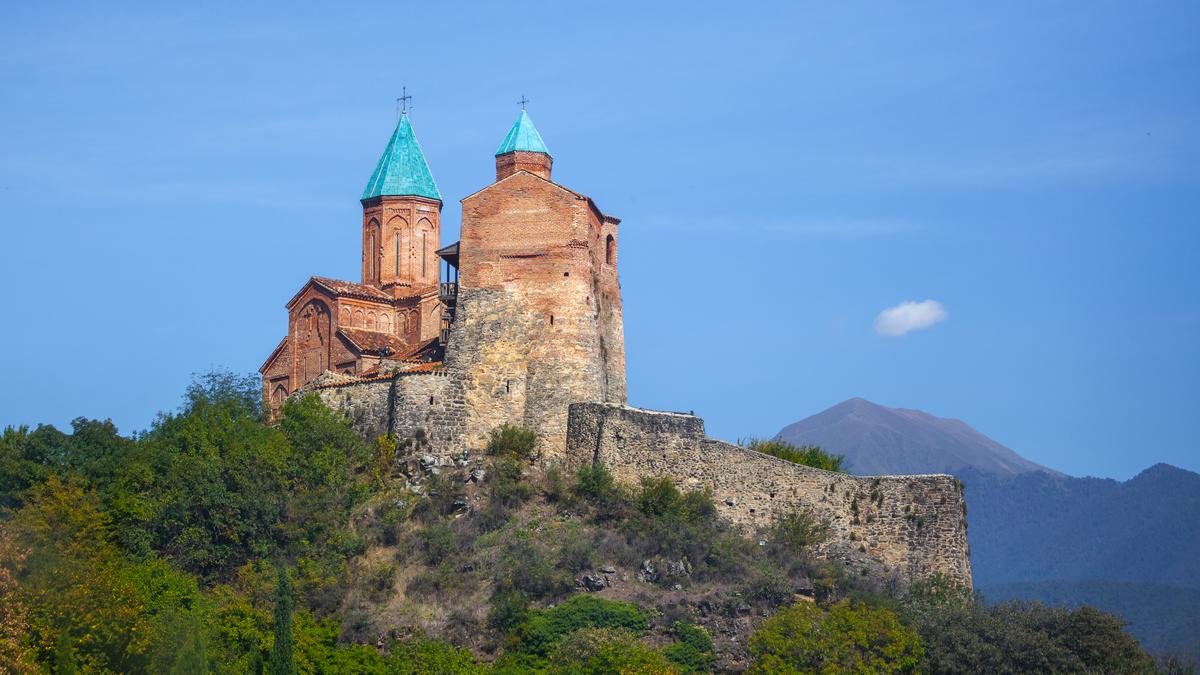
Nekresi Monastery Complex
Every Christmas, believers bring a pig to Nekresi as a sacrifice. This tradition is connected with a legend. When the fortress was besieged by the enemies, finding themselves in a difficult situation, the Georgians resorted to cunning: they slaughtered the pigs in the fortress and poured their blood over the fence. The Muslims, not wanting to defile themselves with "dishonesty", were forced to move away from the fortress.
The historical town of Nekresi is located in Kakheti, in the vicinity of Kvareli, a few kilometers from the village of Shilda, on the slope of a mountain covered with forests. Like many monuments of Kakheti, the monastery complex is located on a hill, so that a magnificent panorama of the Alazani Valley opens from here.
According to historical sources, the city of Nekresi, of which there is currently little left, was founded by the king of Kartli Farnajom (II-I century BC). Nekresi was the most important city in the region: from here the political and cultural influence of Kartli spread to the mountainous regions of the Caucasus. Before the spread of Christianity, Nekresi was not only a political center, but also the most important center of Zoroastrianism. In the VI century, 13 Assyrian monks arrived in Georgia to establish a new faith. One of them, Father Abibos, settled here in Nekresi and actively began to fight fire worship, which is why he was executed by the Iranians.
The complex that has survived to this day consists of several terraced monuments of various types of different periods: a small basilica (IV century), a large three-church basilica (VII century), a domed church (VIII-IX century), a bishop's palace of the transitional period, a tower (presumably XVI century), small chapels built at different times, etc.
Minor Basilica Nekresi It is one of the first Christian cultural buildings in Georgia. This basilica, unique in its size and shape, was erected by order of King Trdat in the III quarter of the IV century. According to existing written sources, only clergymen could enter the chapel of the early Christian period. Laypeople were afraid to enter the church, so during the service they were in the courtyard. This explains the small size of the temple, arched spans and open side aisles on all sides.
Nekresi restored is an active monastery.
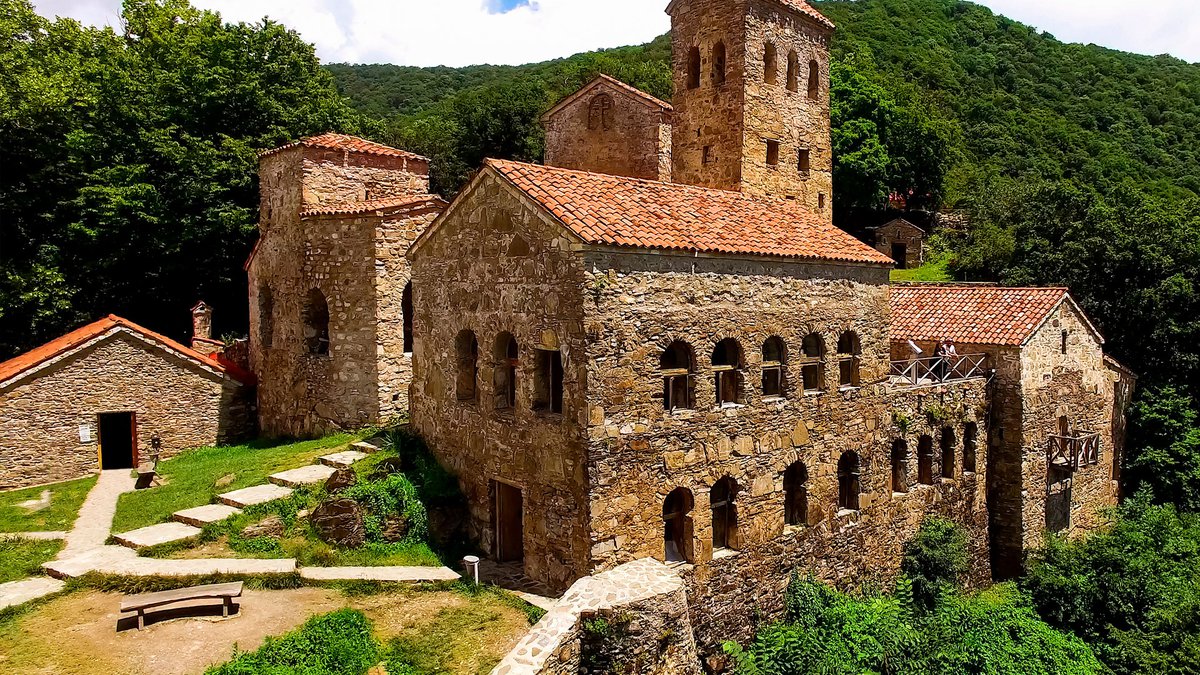
Dzveli and Ahali Shuamta
Not far from the complex, 7 kilometers from Telavi is Ikalto Monastery Complex. It was founded by one of the Syrian monks, Holy Father Zenon Ikaltoeli in the VI century. In the XI-XII centuries, an Academy functioned in Ikalto, in which, along with theology, rhetoric, astronomy, philosophy, geography, geometry and chanting, hammered and pottery art, viticulture and winemaking were taught. A wine cellar, jugs buried in the ground, a workshop for making dishes, a blacksmith shop, etc. were found in the courtyard of the complex.
The Dzveli (old) Shuamta monastery complex is located in a dense forest, in a secluded place, 7 kilometers from Telavi. There are three churches on the territory of the monastery: an original example of ancient Georgian Christian architecture — a three-nave basilica of the V century and two domed churches of the VII century of the Jvari type.
All three churches, according to Kakhetian traditions, were built of cobblestones. A relatively large church has proportions that differ from structures of this type: in relation to the size and space, the dome drum is unnecessarily elongated, the side rooms are not cross-shaped, but the shape of simple squares. There are signs on all four facades of the church. In the interior there are traces of paintings of the XI-XII century. The temples of Shuamta, like other churches of Kakheti, are devoid of decorative elements.
The Akhali (new) Shuamta Monastery is located at a distance of 2-3 kilometers from Dzveli Shuamta. It was erected in the 40s of the XVI century by order of Queen Tinatin, the wife of the Kakhetian king Levan II. According to legend, during a walk, the queen placed an icon of the Khakhul Mother of God under a tree. When the queen and his husband were about to leave, they could not move the icon until Tinatin vowed to erect a church on this place. Later Tinatin took the veil as a nun in Akhali Shuamta.
She is buried here. The church in Akhali Shuamta is a cross—domed temple with skyward proportions. The facade is decorated with a system of numerous flat niches with arrow-shaped arches and large crosses lined with brickwork. In the interior, along with religious subjects, portraits of representatives of the royal family are depicted. Akhali Shuamta was the tomb of representatives of the Chavchavadze, Makashvili, Andronikashvili families. Currently, there is an active convent here.
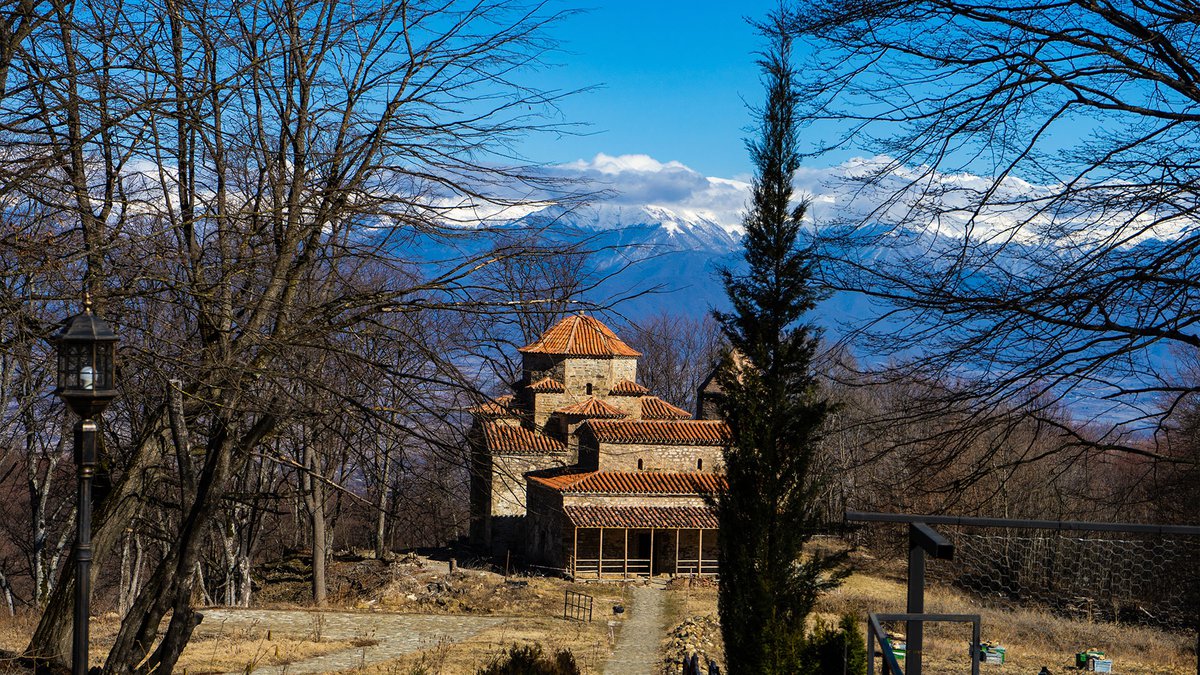
Alaverdi Cathedral
Alaverdi Monastery In the Middle Ages it was one of the most famous temples in Georgia. On September 14, during the celebration of the Exaltation of the Cross of the Lord, the birthday of the cathedral — Alaverdob is celebrated. This ancient tradition is associated with harvesting and is held in honor of the founder of the cathedral, Joseph Alaverdeli.
The majestic Cathedral of Alaverdi is located near the village of Alaverdi, 25 kilometers from Akhmet, It stands on a flat place, in the center of the huge Alazani Valley. Located against the background of the snowy peaks of the Caucasus Mountains, the dome, pointing upwards, attracts attention from a distance and creates a magnificent picture. Alaverdi is the largest church building on the territory of Kakheti and one of the largest in Georgia.
The construction of the first church of Alaverdi is associated with the name of one of the Assyrian fathers Joseph Alaverdi (VI century). The Holy Father chose a remote deserted place, then covered with forests, because of the pagan temple operating here, which attracted many believers.
At the beginning of the XI century, during the period of the power of the Kingdom of Kakheti, by decree of Tsar Kvirike, the cathedral dome of St. George was erected on the site of a small church of the VI century.
In terms of the grandeur of the interior, none of the monuments of Georgian architecture can be compared with the Alaverdi Cathedral. The compact, soaring cathedral is brightly lit thanks to the windows. The facades, like other cathedrals on the territory of Kakheti, are sparingly decorated with decorative elements. The complex is surrounded by a fence reinforced with round towers (XVII-XVIII centuries), inside the fence there are buildings of different periods: to the west of the entrance there is a low building, on the ground floor of which there is a large hall with a vaulted ceiling. There was a refectory here in the XVII century. To the north-east of the cathedral was the palace of Peikar Khan, the governor of Shah Abbas in 1616-1623. A low quadrangular building and a barracks are attached to it. Inside the fence of the cathedral there are also chapels built at different times, a wine cellar, cells and other buildings.
Since 2007, the monastery has been included in the tentative list of UNESCO World Heritage Sites.
Georgia is an amazing country where the most incongruous things are combined. Ancient traditions and modern customs, Christian temples and Islamic mosques, mountains and the sea, hospitality and militancy.
All this creates Georgia as it is. And for this she is loved not only by residents, but also by millions of tourists from all corners of the globe.
Get acquainted with the national flavor and other sights of the country on the pages of the madloba resource. Here we try to tell in as much detail and clearly as possible about everything that the Georgian people live by
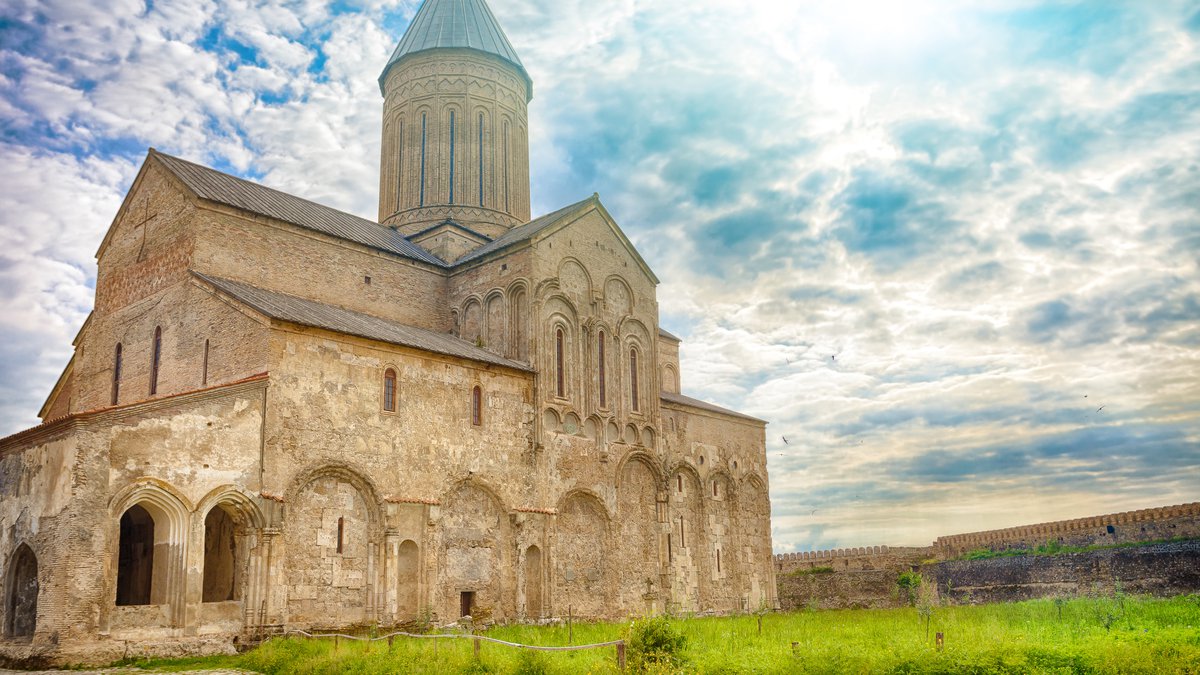












10 comments
Log in to leave a comment
One of the must-see temples in Kakheti is the Alaverdi Cathedral. Situated in the Alazani Valley, this towering medieval masterpiece captivates visitors with its grandeur and historical significance. Its stunning architecture and intricate frescoes showcase the rich cultural heritage of Georgia.
Another gem in Kakheti is the Bodbe Monastery, located near the town of Sighnaghi. This sacred site is a pilgrimage destination as it houses the tomb of Saint Nino, who brought Christianity to Georgia in the 4th century. The tranquil atmosphere, beautiful gardens, and panoramic views make Bodbe Monastery a serene and spiritually uplifting place to visit.
For those seeking a more secluded and remote experience, the David Gareja Monastery complex is a hidden treasure. Located in the desert-like landscape on the border with Azerbaijan, this unique monastery offers a glimpse into Georgia's ancient monastic traditions. The intricate cave architecture, stunning murals, and panoramic views create an otherworldly ambiance that leaves a lasting impression.
Finally, no visit to Kakheti would be complete without seeing the iconic Tsinandali Estate. While not a traditional church, this historic estate holds cultural and historical significance. It is famous for its winemaking heritage and also hosts concerts and exhibitions, making it a cultural hub in the region.
These are just a few examples of the exceptional Christian temples in Kakheti, but there are many more waiting to be discovered. Whether you are a history enthusiast, a spiritual seeker, or simply someone who appreciates breathtaking architecture, exploring the temples of Kakheti will leave you with a deep appreciation for Georgia's cultural and religious heritage.
Также узнала, что первые поселения на территории Греми появились в эпоху позднего бронзового века. Но стратегическую и политическую значимость город приобрёл в XV веке, когда первый царь Кахетинского царства Георгий (1466-1476 гг) объявил Греми столицей.